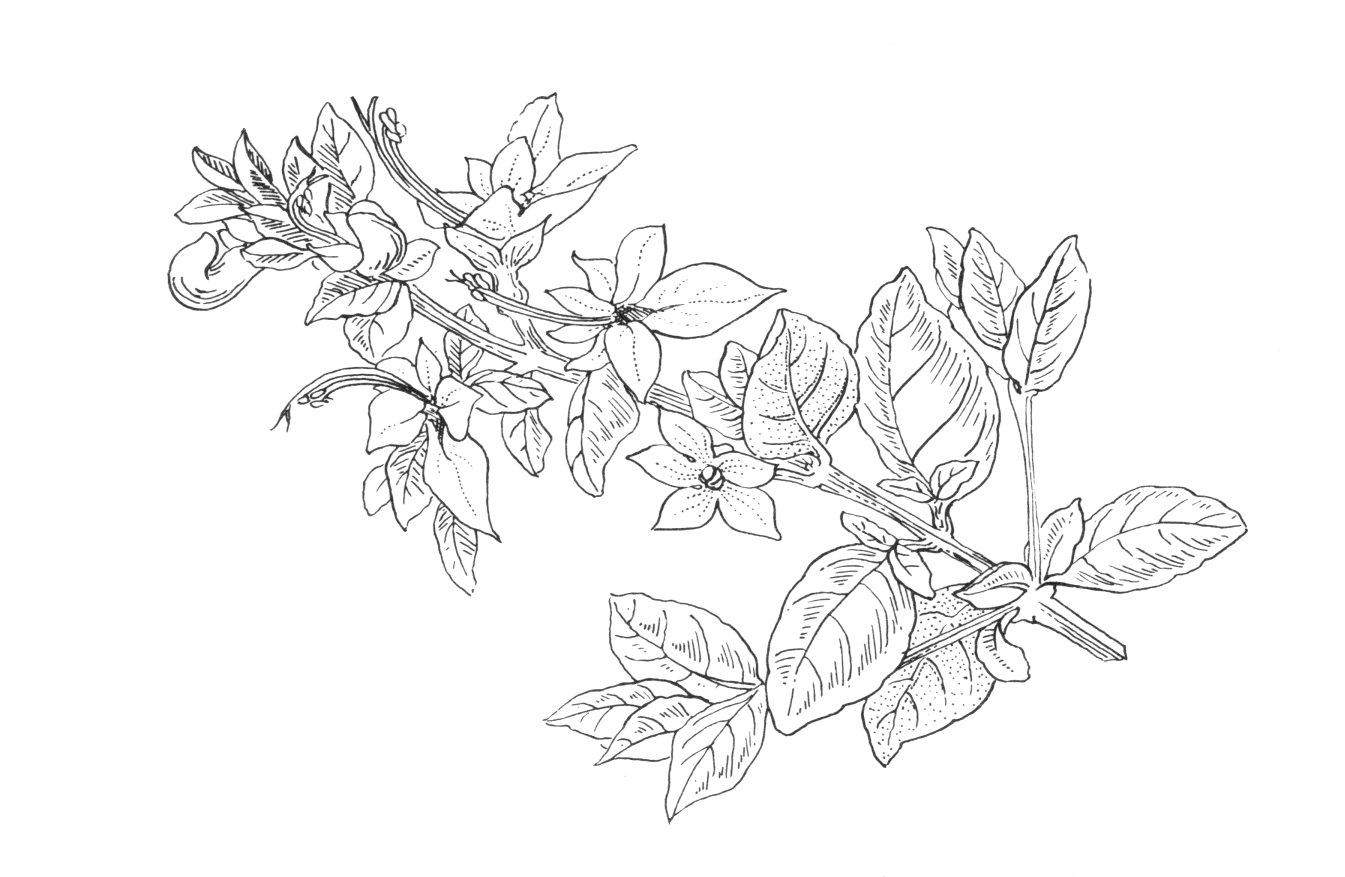Teucrium fruticans
Credits
Article from Bean's Trees and Shrubs Hardy in the British Isles
Recommended citation
'Teucrium fruticans' from the website Trees and Shrubs Online (treesandshrubsonline.
Genus
Common Names
- Shrubby Germander
An evergreen shrub of diffuse habit, naturally 7 or 8 ft high, stems square, and covered with a close white felt. Leaves opposite, ovate, 1⁄2 to 11⁄2 in. long, about half as wide, broadly wedge-shaped or rounded at the base, bluntish at the apex; dark, rather bright green and glabrous above, white, with a close felt beneath, fragrant when crushed; stalk 1⁄4 in. or less long. Flowers produced during the summer and sometimes in autumn singly in the axils of the small uppermost leaves or bracts – the whole forming a raceme 3 or 4 in. long. Calyx 1⁄4 in. long, with five ovate, pointed, leaf-like lobes, white beneath. Corolla pale purple or lavender-coloured, forming a short tube at the base, to which the four long stamens are attached, then developing into a large five-lobed lip 1 in. long (like the lip of an orchid flower in shape), the basal pair of lobes the smallest and palest; flower-stalk white, 1⁄4 in. or less long.
Native of Portugal, the W. Mediterranean region and the Adriatic; introduced early in the 18th century. It is very pretty, and its curiously shaped labiate flower makes it one of the most easily recognised of shrubs. It can be grown in the open in the milder parts, but elsewhere it needs the protection of a wall and is hardiest in a light, well-drained soil. Easily increased in summer by cuttings of half-ripened wood. It needs no regular pruning apart from a light trimming after the main flush of flowers is over and the removal of winter-killed wood in spring.

